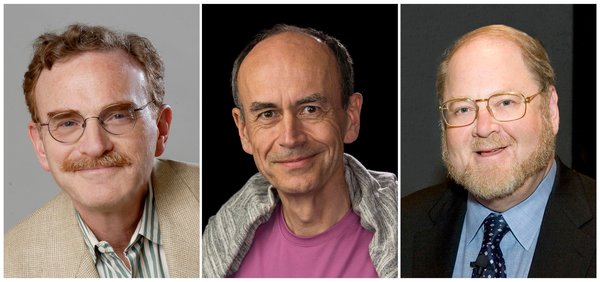|
By Aditya Nair
The Nobel Prize in Medicine or Physiology is awarded annually to the scientist or scientists that perform the most influential research contributing to science’s understanding of medicine or physiology. This year, the award went to James E. Rothman (Yale, and formerly Columbia), Randy W. Schekman (University of California at Berkeley), and Dr. Thomas C. Südhof (Stanford). Each played his part in helping to further understand one of the mysteries of biology: How a cell knows where to send its products. It helps to think of cells as little factories. Each factory has a production line of sorts, and makes some kind of specific product that is needed somewhere else – sometimes somewhere very far away. In order to do this, the factory packages the product in a convenient and safe shipping container, and sticks a label on it that determines the final location of the box. While this process may seem simple and easy in the human world, in the molecular factories of cells, the process is much more intricate and complicated. Unlike factory shipping, cells aren’t directly controlled by sentient beings who have devised a specific and efficient postal system to get products delivered to exactly where they need to go. But, as the Nobel Prize-winning researchers discovered, they have come pretty close. Schekman first worked on figuring out the biomechanics behind this cellular packaging process in the 1970’s. He knew that in order to transport products, cells wrap the products inside a sphere called a vesicle. He studied defective yeast cells, where the transportation process wasn’t working properly. Much like the traffic jams in our world, he found areas where “backed-up” vesicles were piling together and getting stuck. It turns out that a particular set of genes was malfunctioning in the yeast cells affected, meaning that it was those genes that provided the blueprint for this cellular postal system. Building upon this discovery, Rothman in the 1980’s focused on the action of the proteins that those genes coded for. A protein complex on the vesicles interacts with a protein complex on the receptor site and “locks” the vesicle to the destination cell. Different combinations of proteins code for different destination sites and thus allows for cell-specific targeting. Then, like a zipper, the vesicle unravels and dumps its contents into the destination cell. I’d analogize this to a “ZIP code,” but there are so many brilliant puns possible that I just can’t decide upon one. Although this research was completed in yeast cells, it was later discovered that some of the genes that Schekman discovered encode for the proteins that Rothman described in humans, suggesting a common evolutionary mechanism for vesicle delivery across species. Südhof extended this discovery to nerve cells, where vesicles containing neurotransmitters empty their contents into the synaptic cleft (the space between the ends of two neurons), initiating communication with the next neuron. These vesicles can only do this when the nerve cell intends to signal its neighbor. Südhof discovered the way that the vesicles time the release. He found that vesicles are sensitive to calcium ions, which are released by other parts of neurons during neuronal firing, which is how the vesicles know precisely when to empty. Not only are these discoveries extremely interesting – these three discoveries taken together open up possibilities for hyper-specific drug delivery and, eventually, potential cures for neurological disorders.
0 Comments
Leave a Reply. |
Categories
All
Archives
April 2024
|

